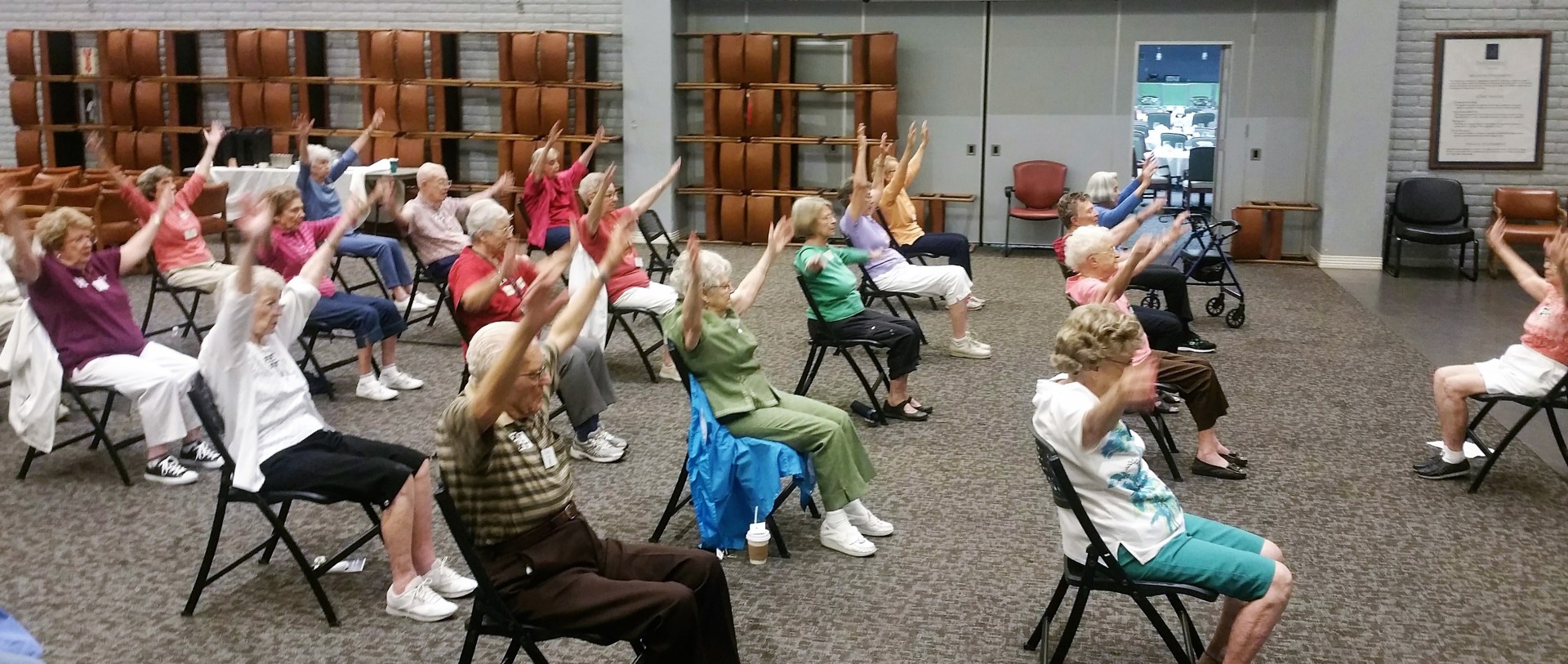I was asked to write my first article while Jon Schilling was on vacation. Since I’m one of the newest full time employees, I thought that it would be best for me to take this opportunity to introduce myself to Beatitudes Campus.
I am a personal fitness instructor, certified by the National Academy of Sports Medicine since 1996. I worked as a fitness instructor in various Health Clubs and Medical Clinics. Most of that time I worked at Mountain Shadows Resort and Golf Club in Paradise Valley.
I am a new full time employee, but I am not new to this campus. Many of you know me from my previous positions. I started working here for Beatitudes at Home in July, 2012.
I later became the group instructor in the Functional Fitness class.
I left Beatitudes at Home to work in a physical therapy clinic in 2013 for two years, but I continued to be the instructor for the Functional Fitness class.
From the beginning, I made it clear that I enjoyed working with the people in this environment and that I wanted to work here full time. The average age of my fitness clients, over the course of my 20 year career, has always been 50+ years old.
My new position title is Fitness Specialist. My duties include Fitness Center Attendant, Personal Fitness Instructor and Group Fitness Instructor.
Now that I am here full time, I will channel all of my studies into fitness training for residents 65 years and older. This means that I will find the best ways to address age related physical illnesses and injuries.
I am gathering as much literature on dementia as I can find, so I can create effective workout strategies that best serve residents who may suffer from this terrible disease. I also want to be able to offer useful tips to help friends, relatives and caregivers to communicate with them through troubling times.
The physical therapists who work on campus are wonderful! I have a good relationship with them. Residents who have suffered from an illness or injury that work with the campus therapists may want to extend their physical rehabilitation long after they have been discharged. I can do one on one fitness sessions to extend the physical therapist’s treatment strategies within my limitations as a Certified Fitness Trainer. It has been three months since I have been a full time employee on Campus. I DO NOT need any more time to analyze my decision to take this position. I already concluded that I made the BEST decision to join this team.
I feel very comfortable with the staff and the residents. I enjoy getting opportunities to share laughs with everyone, especially when I “goof up” during my fitness classes.
If I haven’t had the pleasure of meeting you yet, please stop me in the hallways, come to one of my fitness classes or stop by the Fitness Center. I’M LOOKING FORWARD TO IT!

















 Active Aging Week 2016, “Explore the Possibilities”, has officially begun!! We hope everyone comes out and attends as many events as possible, takes advantage of the food and drinks, and, most importantly, has fun and get to know your neighbors! The Life Enrichment Department would like to thank Nancy Campbell, Sherwin Block, Naomi Oglesby, Bonny Hoffman, Farrell Kenimer, Bob Longoni, and Igor Glenn for their time and effort in making this week a success!
Active Aging Week 2016, “Explore the Possibilities”, has officially begun!! We hope everyone comes out and attends as many events as possible, takes advantage of the food and drinks, and, most importantly, has fun and get to know your neighbors! The Life Enrichment Department would like to thank Nancy Campbell, Sherwin Block, Naomi Oglesby, Bonny Hoffman, Farrell Kenimer, Bob Longoni, and Igor Glenn for their time and effort in making this week a success!
 Late each year, beneficiaries are offered the opportunity to review their Medicare plans and make changes accordingly during the Medicare Open Enrollment Period. Understanding how your insurance selection impacts you is more important today than ever before. This is crucial since the Affordable Health Care Plans and Medicare are key Congressional discussion items.
Late each year, beneficiaries are offered the opportunity to review their Medicare plans and make changes accordingly during the Medicare Open Enrollment Period. Understanding how your insurance selection impacts you is more important today than ever before. This is crucial since the Affordable Health Care Plans and Medicare are key Congressional discussion items.
 Initiated in 2003, by the
Initiated in 2003, by the 







